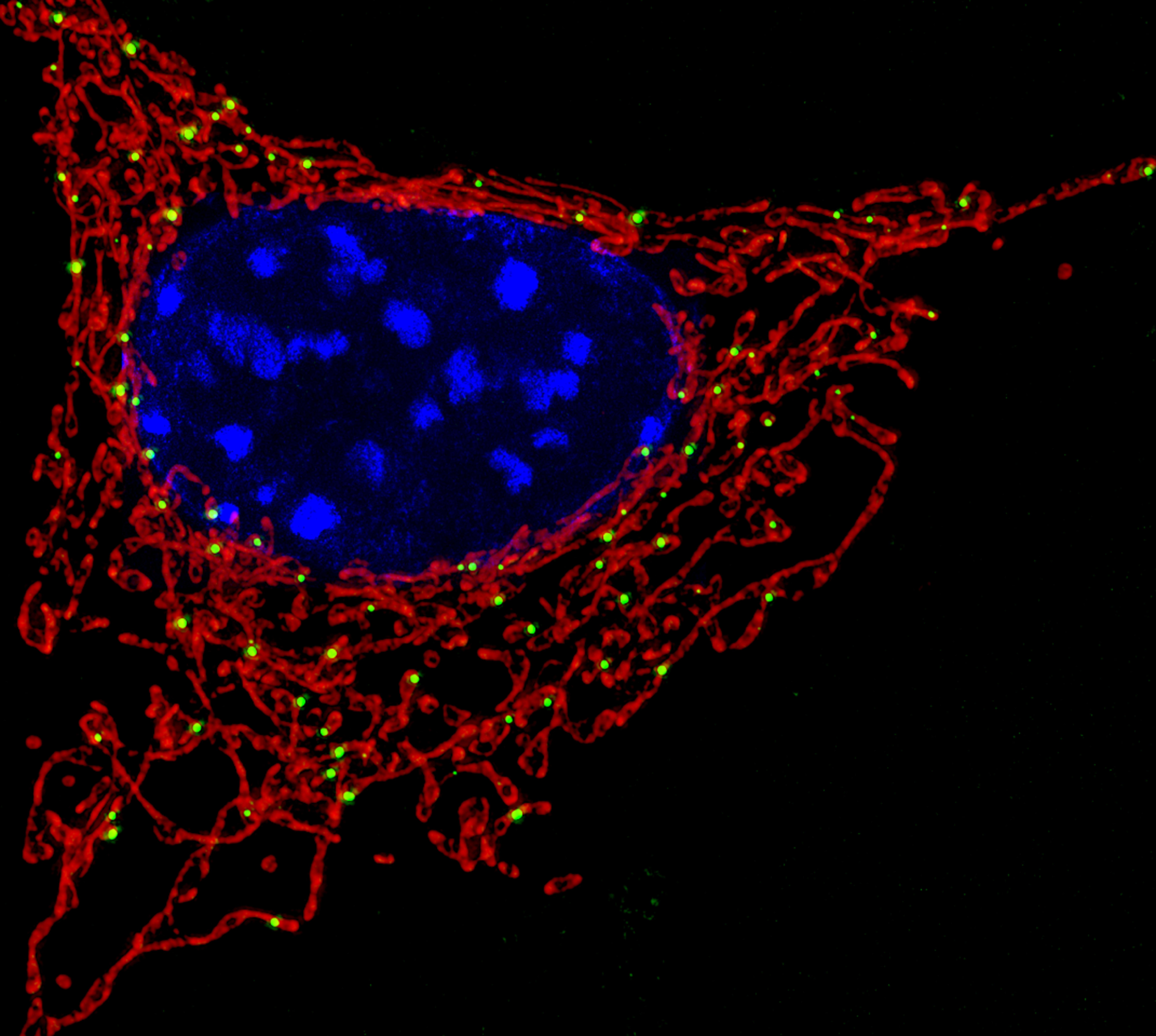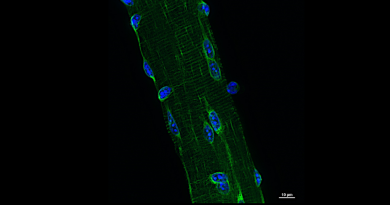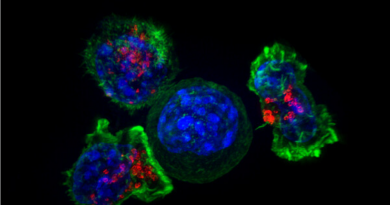How disrupting mitochondria genes can lead to neurodegeneration
Years back, the Bellen lab identified many mutations in genes of the mitochondria, the energy generators of the cell. Among them was a mutation in the gene isocitrate dehydrogenase 3a (idh3a), whose protein product is a tricarboxylic acid enzyme that produces alpha-ketoglutarate. Both are key elements of the Kreb’s Cycle.


“The Kreb’s Cycle or tricarboxylic acid cycle, which takes place in the mitochondria, is the fundamental pathway that generates cellular energy. Recently, mutations in genes that produce key metabolites have been implicated in neurodegeneration and cancer,” said first author Berrak Ugur, a graduate student in the Bellen lab.
When Ugur and her colleagues studied the idh3a genes in fruit flies they found that loss of the genes disrupted mitochondrial structures and reduced the levels of alpha-ketoglutarate. Nevertheless, the mitochondria’s ability to produce energy remained unaltered for an extended period.
However, the researchers were surprised to see that the loss of idh3a from fruit fly neuromuscular junctions disrupted synapses, the communication between neurons. Synapses are contact points where one neuron communicates with another through the release of synaptic vesicles, tiny sacs filled with chemicals known as neurotransmitters.
Unexpected connections

“Loss of idh3a severely reduced the release of neurotransmitters, perturbing neurotransmission. What struck us immediately was that the morphological and neurotransmission defects observed at synapses of idh3a mutants were strikingly similar to those observed in synaptotagmin 1 (syt1) mutants. We first characterized this gene in our lab 25 years ago as a synaptic calcium sensor and facilitator of rapid neurotransmission,” said Dr. Hugo J. Bellen, professor of molecular and human genetics and neuroscience at Baylor College of Medicine and an investigator at the Howard Hughes Medical Institute. Bellen also is at the Jan and Dan Duncan Neurological Research Institute at Texas Children’s Hospital.
“We were excited and intrigued that the morphological and electrophysiological defects exhibited by these two mutants were quite similar and unique,” Bellen said. “So far, none of the previously studied mitochondrial or synaptic trafficking mutants have exhibited these features.”
The unexpected discovery that idh3a and syt1 mutants are similarly defective in neurotransmission prompted the researchers to explore the possibility that the functions of these two genes were connected. Was the role of alpha-ketoglutarate at the synapses to facilitate synaptotagmin 1 function in vesicle fusion and release of neurotransmitters?
A series of laboratory assays confirmed the researcher’s hypothesis; in the absence of alpha-ketoglutarate, the process of fusion between synaptic vesicles was inefficient and slow.
Our experiments reveal an unexpected and important role for alpha-ketoglutarate in facilitating close interaction between synaptotagmin 1 and membrane lipids, which promotes rapid and efficient synaptic vesicle fusion, essential for optimal neurotransmission,” explained Berrak.
“Recently, an infant with severe encephalopathy and intractable epilepsy was found to have a functional loss of both copies of the IDH3A gene. Our study explains the probable cause of epileptic encephalopathy in this patient. We also provide a molecular mechanism to understand how mitochondrial mutations could cause this and other neurological conditions. We hope our findings will help in developing therapeutic interventions for these patients in the future,” Bellen said.
Read all the details of this study in the journal Cell Reports.
###
Other contributors to this work include Huan Bao, Michal Stawarski, Lita R. Duraine, Zhongyuan Zuo, Yong Qi Lin, G. Gregory Neely, Gregory T. Macleod and Edwin R. Chapman. The researchers are affiliated to one or more of the following institutions: Baylor College of Medicine, Texas Children’s Hospital, University of Wisconsin-Madison, Howard Hughes Medical Institute, Florida Atlantic University and the University of Sydney.
This project was funded by Human Frontier Science Program (LT000712/2015-L), National Institutes of Health (NINDS NS061914), National Institutes of Mental Health (RO1 MH061876), Robert and Renee Belfer Family Foundation, the Huffington Foundation and the National Institutes of Health (1RC4GM096355-01, R24OD022005-02, and R01GM067858).



